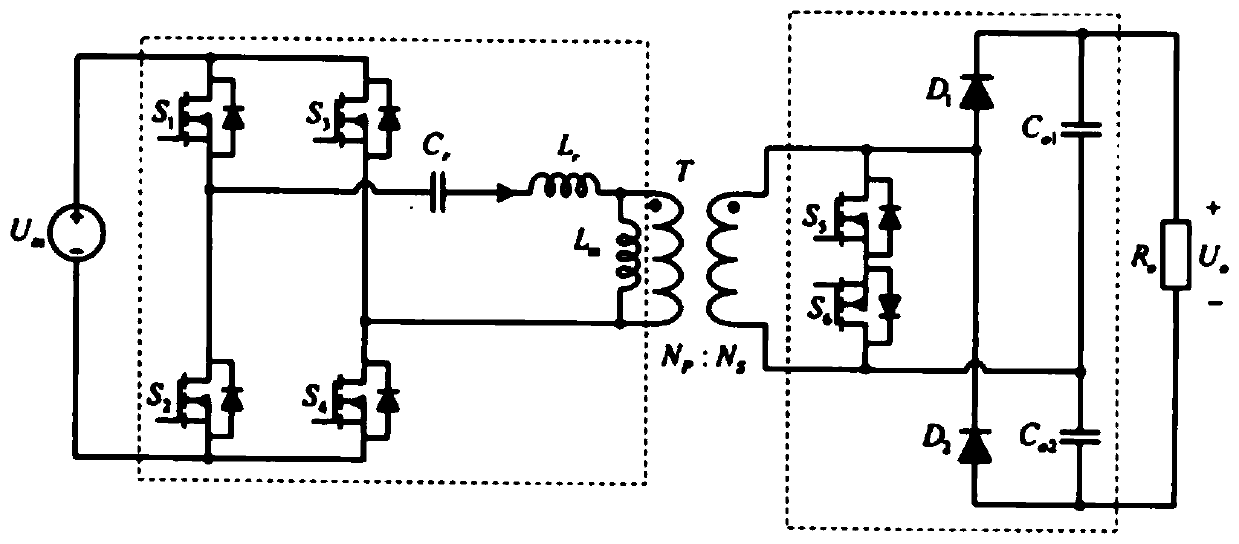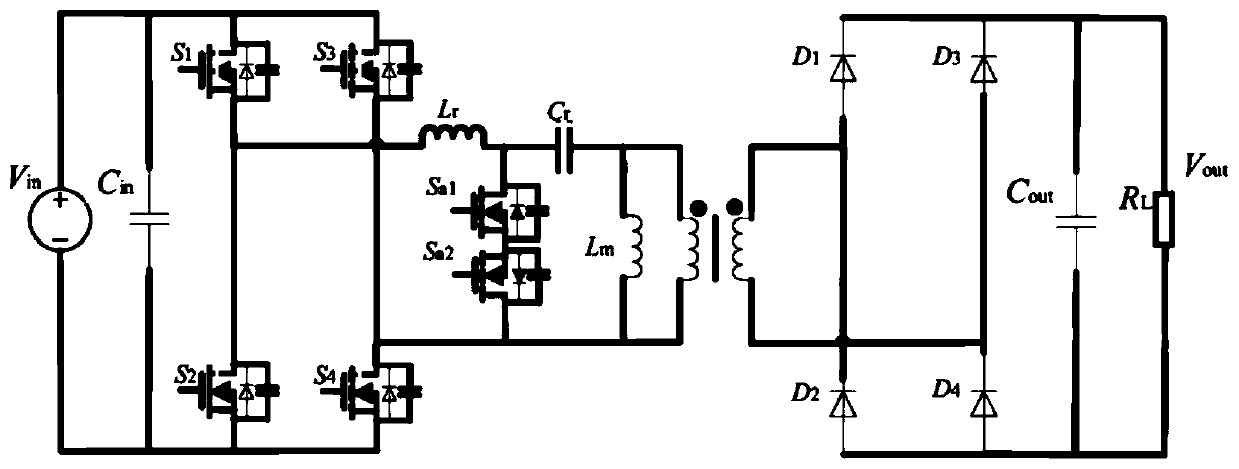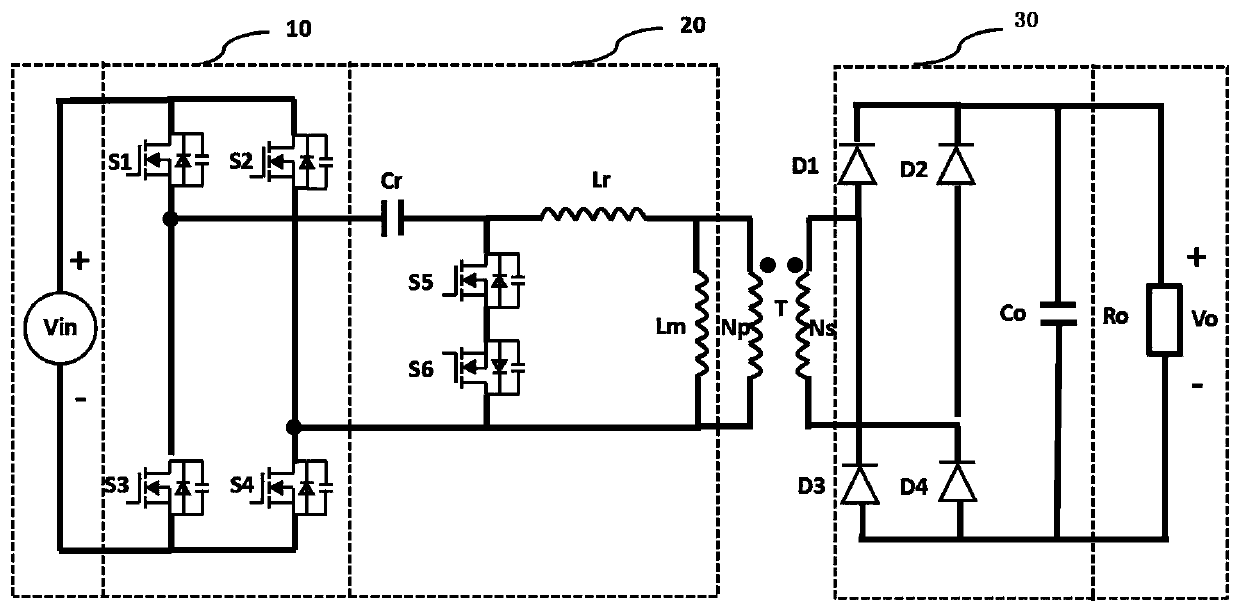LLC resonant converter and control method
A technology of a resonant converter and a control method, which is applied in the control/regulation system, the conversion of AC power input to DC power output, and the conversion of DC power input to DC power output, etc., can solve the problems of large device stress and inconvenient converter design. , to achieve the effect of small frequency conversion range, excellent comprehensive performance, and reduced loss
- Summary
- Abstract
- Description
- Claims
- Application Information
AI Technical Summary
Problems solved by technology
Method used
Image
Examples
Embodiment Construction
[0028] Such as image 3 As shown, the LLC resonant converter of this embodiment includes an inverter circuit 10 , an LLC resonant cavity 20 , a transformer T and a rectification network 30 sequentially connected from input to output. In the figure Vin is the input power of the converter, Ro is the output load R of the converter 0 .
[0029] The inverter circuit 10 is a full-bridge inverter circuit composed of a switch tube S1, a switch tube S2, a switch tube S3, and a switch tube S4. The LLC resonant cavity 20 includes a resonant inductance Lr, an excitation inductance Lm and a resonant capacitor Cr, and a bidirectional switch composed of a switching tube S5 and a switching tube S6 is additionally provided. The rectification network 30 is a full bridge rectification circuit composed of 4 diodes D1-D4 connected in parallel to output filter capacitor C 0 constitute.
[0030] The drain of the switching tube S1 is connected to the drain of the switching tube S2 and the positiv...
PUM
 Login to View More
Login to View More Abstract
Description
Claims
Application Information
 Login to View More
Login to View More - R&D
- Intellectual Property
- Life Sciences
- Materials
- Tech Scout
- Unparalleled Data Quality
- Higher Quality Content
- 60% Fewer Hallucinations
Browse by: Latest US Patents, China's latest patents, Technical Efficacy Thesaurus, Application Domain, Technology Topic, Popular Technical Reports.
© 2025 PatSnap. All rights reserved.Legal|Privacy policy|Modern Slavery Act Transparency Statement|Sitemap|About US| Contact US: help@patsnap.com



